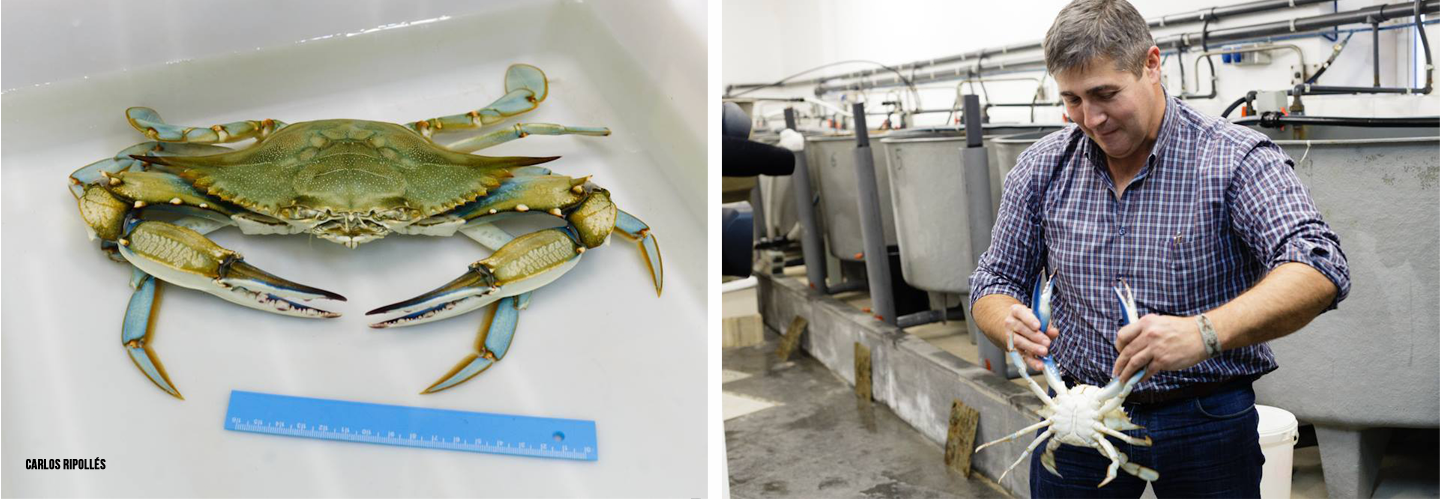Researchers at the Campus Gandia of the UPV are studying the only specimen of blue crab (exotic large crab) to be found in the Gandia coast. The species is a predatory, edible variety of blue crab that has been spotted in waters off the Mediterranean coast for the last year and a half. If its proliferation goes unchecked, this crab could threaten native species of fish and shellfish such as tellinas.
The blue crab is a species of crab native to the waters of the western Atlantic Ocean, but is expanding across the entire Atlantic Ocean and the Mediterranean Sea. Miguel Rodilla, director of the Masters Degree Program in Environmental Assessment and Monitoring of Marine and Coastal Ecosystems and undergraduate professor of Environmental Sciences at the Campus of Gandia, has been trying to locate specimens for the last two years because of the tremendous biological and economic impact that the proliferation of this species will have in the Mediterranean.
The first sighting of these specimen in the region of Valencia occurred in the Albufera lagoon in October 2014, followed by sightings in Guardamar del Segura, and the first sighting in Gandia in May. In the case of Gandia, it was the fishermen who regularly collaborate with Rodilla who brought him the live captured specimen.
The life cycle of the blue crab is relatively short (an average of three years), but during that time they grow to the size of twenty centimeters, making them voracious predators. They eat large quantities of shellfish such as clams and tellinas; cuttlefish eggs, jellyfish and even fish … so their proliferation may prove a threat to native species. It is crucial, both for institutions and for the fishing industry, to control their proliferation.
AN EDIBLE SPECIES WITH ONLY ONE KNOWN PREDATOR: MAN
The good news is that this crab is edible, but their only known predator is man. In fact, in Italy and in Greece it is already being captured and sold. “We have to learn their habits. We know, for example, that they reproduce in estuaries or coastal fresh water bodies such as the Albufera. It is crucial to control their growth here because it would pose a major threat to the biodiversity in this environment,” says the specialist.
The blue crab adapts easily to different saline levels, is highly resistant to certain pollutants and can live with low concentrations of oxygen. They have already expanded to Turkey, Greece and southern Italy from South America; their larvae travel in ballast water and now that they have come to the Valencian coast, they will most likely stay and reproduce.
Ballast water is the water that provides stability and maneuverability to a ship, depending on their cargo. As ships sail through the seas, the salt levels vary from region to region. The higher the level of salt, the more the ship floats above the water line and the more ballast water it requires to balance the weight. When the saline level drops, the ship dischargse the ballast waters taken on in the coastal waters of another region at the next port of call. Ballast water discharge typically contains a variety of non-native biological materials, including larvae. “Ports need to establish control measures for the ballast water that arrives and the Merchant Marines should be aware of the dangers of this practice,” concludes Miguel Rodilla.
